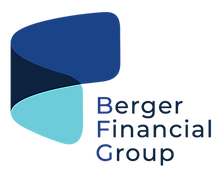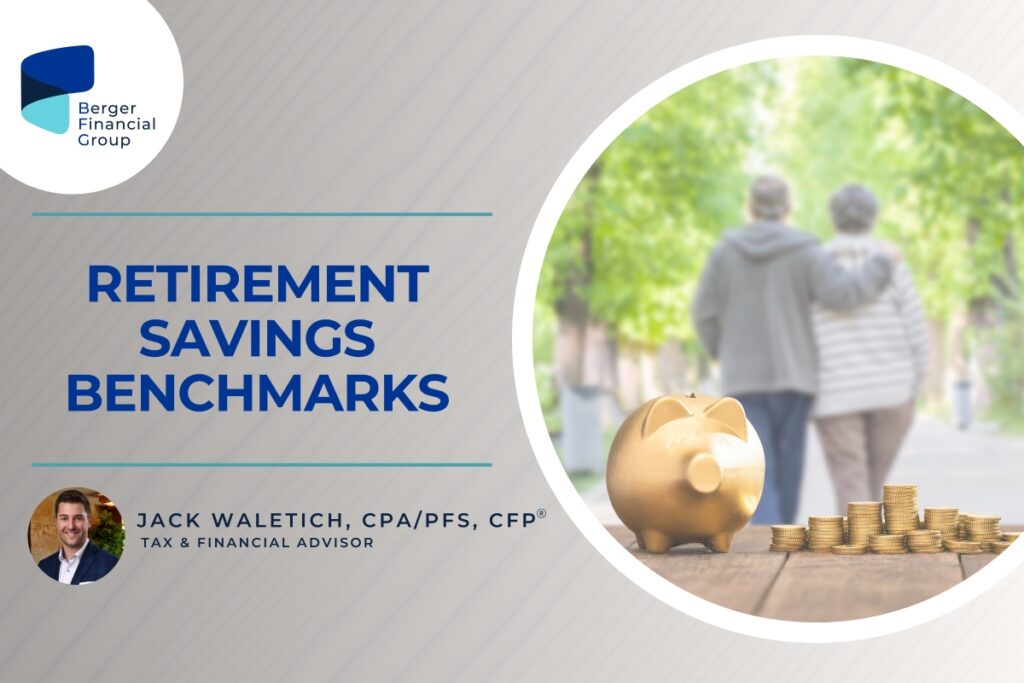While your retirement readiness is dependent upon a multitude of factors specific to your individual situation, it can be helpful to gauge whether you’re on track by comparing with retirement benchmarks. A quick internet search may suggest that saving 15% of your income while working and having 10x your income in investment assets at retirement is an appropriate formula to fund your golden years. However, these numbers don’t hold up well against the stress tests of increased longevity, unexpected expenses, increasing inflation, uncertainty around Social Security, and wanting to replace 100% of your pre-retirement income. Therefore, the benchmarks included in this article are meant to help you work towards a stronger financial future that allows you the freedom to live the retirement of your intentions.
Investment Assets by Age
While the early stages of your career and the chaos of the “messy middle” may be the hardest time to save an extra few bucks, they are also the most rewarding. The following asset benchmarks illustrate how modest savings early on are all you need to be on your way to a fruitful retirement:
Target Investment Assets (By Age)
| Age | Investment Assets |
| 30 | 1x Annual Income |
| 40 | 3x Annual Income |
| 50 | 12x Annual Income |
| 60 | 23x Annual Income |
If you were to tell a 30-year-old with 1x their annual salary in investment assets that they need 23x to retire, they’d likely be discouraged. But in actuality they’re off to a great start. In fact, it’s possible they could even reach the benchmark asset level by age 60 without changing their current savings rate. Thanks to the phenomenon of compounding returns, the earlier you start investing, the less you need to invest. The following table displays the hypothetical value of a $10,000 investment at age 65 depending on when you started investing:
Hypothetical Value of $10,000 Investment*
| Age Invested | Value at 65 |
| 55 | $ 25,937.42 |
| 45 | $ 67,275.00 |
| 35 | $ 174,494.02 |
| 25 | $ 452,592.56 |
| *Assumes 10% Annual Rate of Return | |
As you get closer to retirement and your portfolio continues to grow, your investment gains actually become larger than the amounts you save into the account (which is why you see such a large jump from 12x to 23x over the final decade in the first table). That’s great news if you started investing early and terrifying news if not. Moral of the story: Start now!
Savings Rate- 25% of Annual Gross Income
Investment assets aren’t a meaningful benchmark if your spending is out of control. Discipline is the most important factor in wealth creation. Living on less than what you make creates margin in your financial life that allows your money to be invested and compound over time. The question then (especially among younger individuals further away from asset benchmarks) is, “Am I saving enough?”
25% is the ultimate goal for your savings rate. Albeit high, saving 1/4th of your income is a great way to ensure that your spending is in check and your retirement portfolio is funded. Depending on your situation, however, reaching this savings amount may not be easy or even possible. The important thing is finding the savings rate that’s right for you and following through on the plan.
Median America- How do you stack up?
The following data comes from the Federal Reserve’s most recent Survey of Consumer Finances:
Median Retirement Assets in the US (By Age)
| Age | Median Retirement Assets |
| Less Than 35 | $18,880 |
| 35-44 | $45,000 |
| 45-54 | $115,000 |
| 55-64 | $185,000 |
| 65-74 | $200,000 |
| 75+ | $130,000 |
The formula for saving money and accumulating assets is simple, but not easy. One may conclude from this data that most Americans are not financially prepared for retirement. This makes it even more important to plan ahead and ensure you’re taking the necessary steps to build something that is not going to build itself.
Takeaway
While benchmarks can give a general idea, your retirement readiness is subject to the unique aspects of your personal situation. By working with your advisor, you can create a personalized retirement plan that will allow you to move forward with confidence into your financial future and achieve true wealth; the ability to do what’s most important to you!




